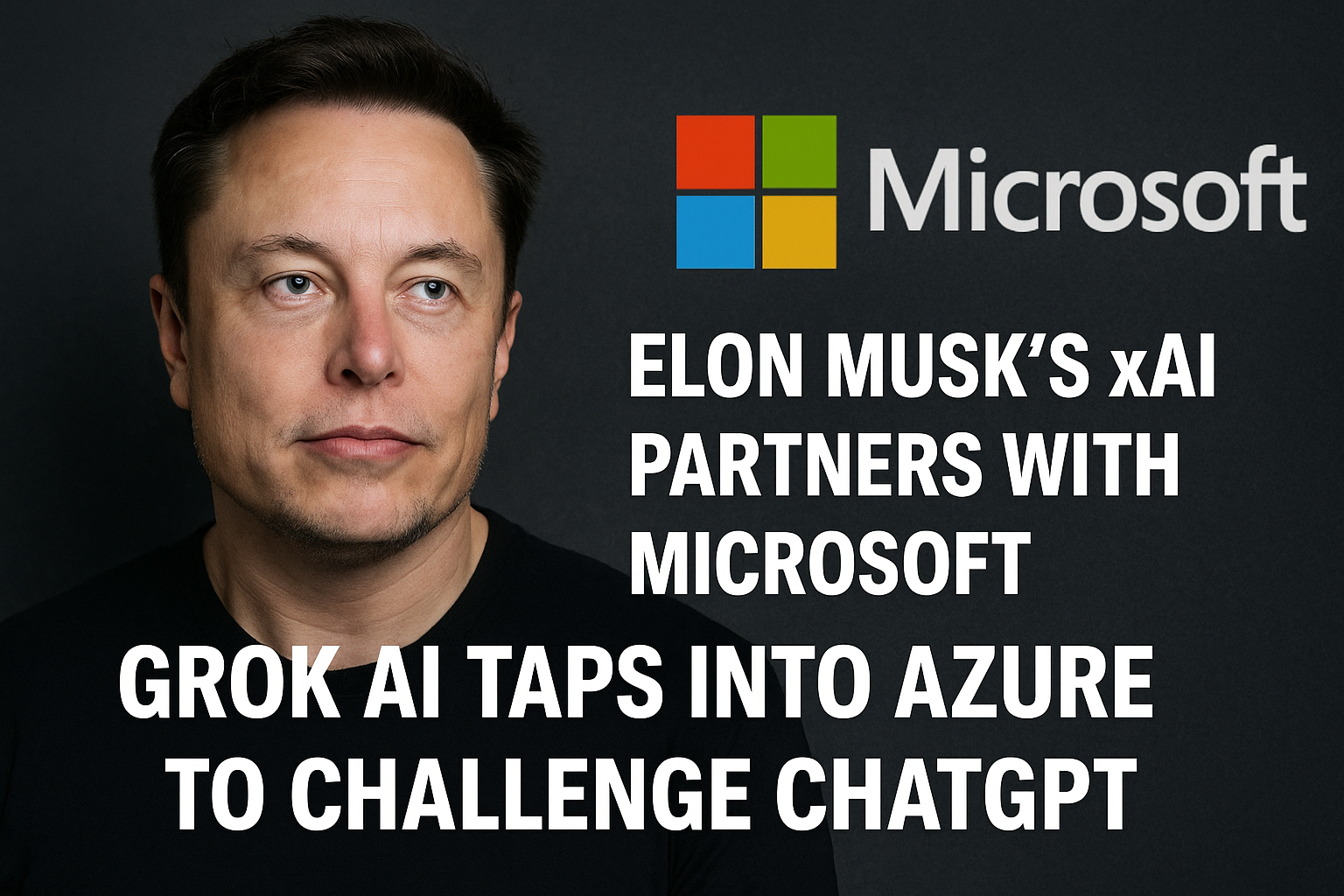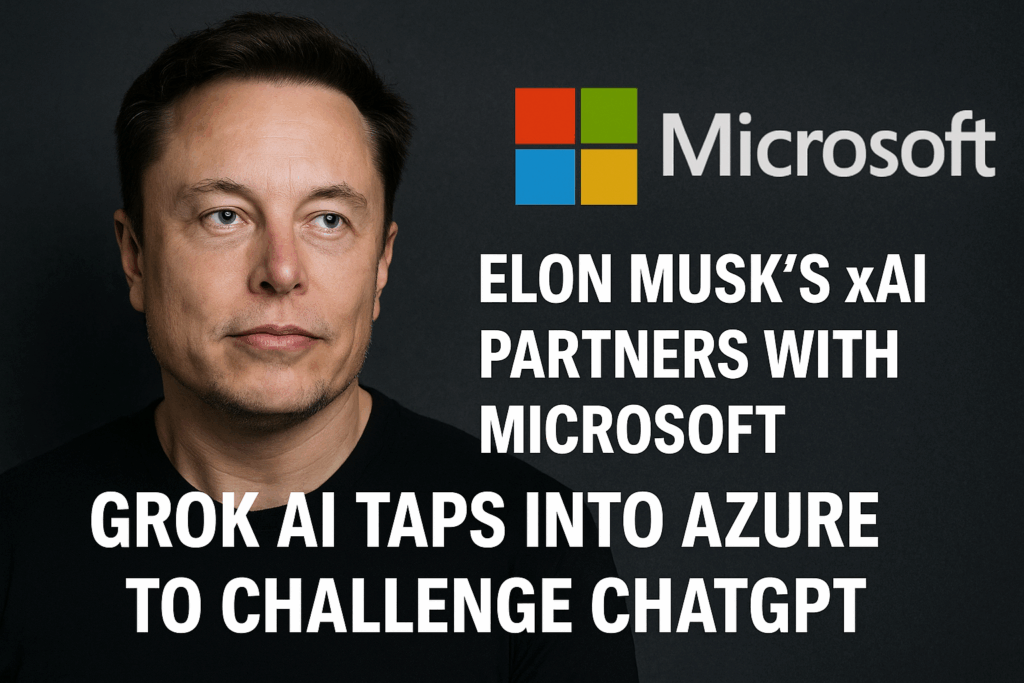In a bold move shaking up the generative AI space, Elon Musk’s xAI has entered a strategic partnership with Microsoft, integrating its Grok AI chatbot into the robust Azure Cloud infrastructure. This collaboration signals a significant escalation in the AI rivalry between Musk and OpenAI, the organization he co-founded and now openly challenges.
Grok AI Takes Flight on Azure
Grok AI, the conversational large language model (LLM) developed by xAI, will now be available to enterprise customers via Microsoft Azure. This marks the first time Microsoft has partnered with an AI competitor to OpenAI, which has long been deeply embedded in Microsoft’s ecosystem—fueling products like Copilot, Bing Chat, and other AI tools.
Unlike ChatGPT, Grok is known for its edgy tone, political irreverence, and its integration into X (formerly Twitter). Its availability through Azure is a tactical expansion aimed at appealing to developers and businesses that are seeking alternatives to OpenAI’s offerings.
The AI Battlefield Heats Up
This partnership comes at a time when OpenAI is facing mounting scrutiny—including internal disputes, leadership challenges involving Sam Altman, and a lawsuit filed by Elon Musk himself. Musk alleges that OpenAI has strayed from its founding mission to be an open-source, nonprofit research entity. In contrast, xAI positions itself as a guardian of “truth-seeking” artificial intelligence.
With Microsoft Azure now supporting both Grok and OpenAI’s models, the tech giant is playing a multi-front game in the evolving world of generative AI and machine learning.
AI Integration: From Chatbots to Ecosystems
The Grok-Microsoft alliance is about more than just compute power. It represents a new kind of AI integration, where cloud infrastructure, model deployment, and user platforms like X (Twitter) converge. Users can expect smoother enterprise deployment, better API access, and faster AI model training.
Grok’s back-end operations will benefit from Microsoft’s global reach and high-performance infrastructure, including the Azure AI supercomputing stack, which supports everything from language understanding to vision and multimodal tasks.
The Bigger Picture: Tesla, Neuralink, and AI Supremacy
For Musk, this move fits into a broader ecosystem that includes Tesla, Neuralink, and SpaceX—all of which are increasingly reliant on next-gen AI models for innovation. Grok could eventually become a unified interface for Musk’s technology stack, from autonomous driving to brain-computer interfaces.
Meanwhile, Microsoft, now seen as a power broker in the AI startup landscape, has managed to keep one foot in both camps—supporting both OpenAI and xAI. This dual-bet strategy could pay off as the AI race becomes less about one winner and more about differentiated strengths.
Conclusion: Tech Alliances Redefine the Future of AI
This new partnership adds a twist to the ongoing saga between Elon Musk, Sam Altman, and the battle for ethical, scalable, and open artificial intelligence. With Grok AI entering the Azure-powered arena, users and enterprises now have more choice—and potentially, more transparency—in the tools they use.
The world of AI chatbots just got a lot more competitive. And as history has shown, when Elon Musk enters a space war, he’s not just aiming to compete—he’s aiming to dominate.




